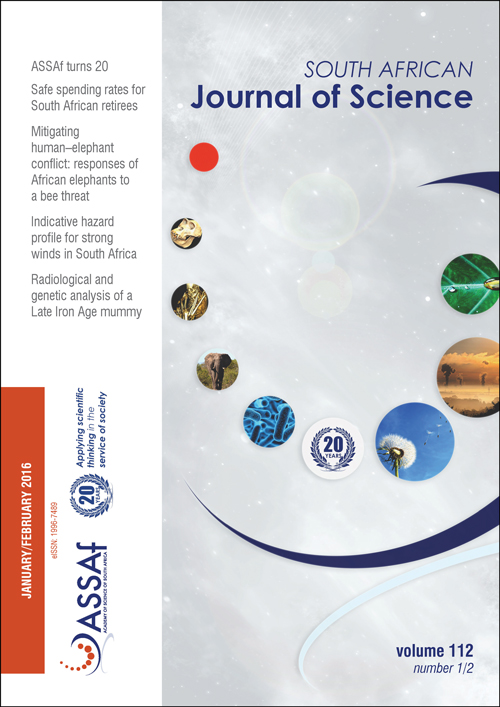Neutrophil extracellular traps and their role in health and disease
DOI:
https://doi.org/10.17159/sajs.2016/20150072Keywords:
antimicrobial activity, autoimmune disease, innate immunity, phagocytes, reactive oxygen speciesAbstract
The human innate immune system is indispensable for protection against potentially invasive microbial and viral pathogens, either neutralising them or containing their spread until effective mobilisation of the slower, adaptive (specific), immune response. Until fairly recently, it was believed that the human innate immune system possessed minimal discriminatory activity in the setting of a rather limited range of microbicidal or virucidal mechanisms. However, recent discoveries have revealed that the innate immune system possesses an array of novel pathogen recognition mechanisms, as well as a resourceful and effective alternative mechanism of phagocyte (predominantly neutrophil)-mediated, anti-infective activity known as NETosis. The process of NETosis involves an unusual type of programmed, purposeful cell death, resulting in the extracellular release of a web of chromatin heavily impregnated with antimicrobial proteins. These structures, known as neutrophil extracellular traps (NETs), immobilise and contribute to the eradication of microbial pathogens, ensuring that the anti-infective potential of neutrophils is sustained beyond the lifespan of these cells. The current review is focused on the mechanisms of NETosis and the role of this process in host defence. Other topics reviewed include the potential threats to human health posed by poorly controlled, excessive formation of NETs, specifically in relation to development of autoimmune and cardiovascular diseases, as well as exacerbation of acute and chronic inflammatory disorders of the airways.
Published
Issue
Section
License

All articles are published under a Creative Commons Attribution 4.0 International Licence
Copyright is retained by the authors. Readers are welcome to reproduce, share and adapt the content without permission provided the source is attributed.
Disclaimer: The publisher and editors accept no responsibility for statements made by the authors
How to Cite
- Abstract 529
- PDF 752
- EPUB 188
- XML 218













.png)